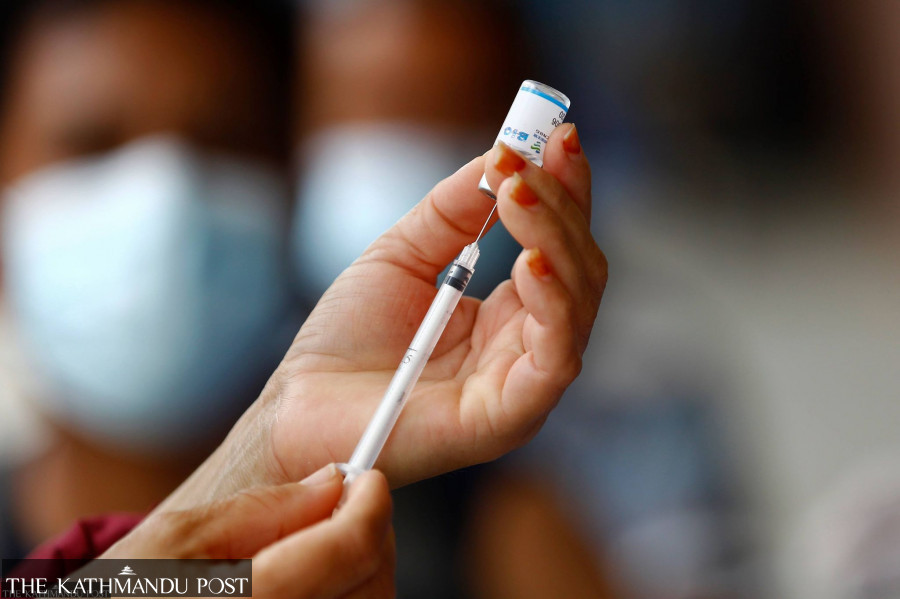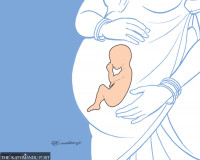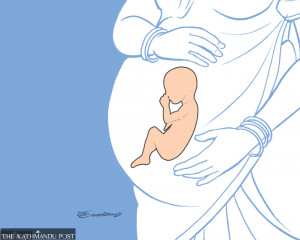Health
Over 50,000 under two-year-olds missed regular vaccination during pandemic
Health Ministry mulls a special programme to inoculate them.
Arjun Poudel
Over 50,000 children under the age of two throughout the country missed their regular vaccination schedules during the Covid-19 pandemic. And over 6,000 children from the age group are estimated to have not taken any vaccine doses.
“Those children are at high risk of contracting various diseases, which could be prevented through regular vaccination,” an official at the Ministry of Health and Population said, asking not to be named. “Although coverage of childhood vaccination in the regular immunisation programme has become normal now, children missing vaccination during the Covid-19 pandemic is a matter of serious concern.”
Childhood immunisation is the number one priority of the government, under which it provides 13 types of vaccines against a range of diseases including measles-rubella, pneumonia, tuberculosis, diphtheria, pertussis, tetanus, hepatitis B, rotavirus, Japanese encephalitis and typhoid under the regular immunisation programme free of cost.
The coronavirus pandemic disrupted many health-related programmes including regular immunisation in many places throughout the country.
With the public transport halted and the fear of the Covid infection among the population, hundreds of children missed their regular vaccine schedule throughout the country when the pandemic was at its peak.
Officials at the Ministry of Health and Population concede that the routine immunisation programme was affected by the pandemic despite the government’s efforts to continue the services.
“We have to concede that a lot of children missed the vaccine during the Covid-19 pandemic,” Dr Bibek Kumar Lal, director at Family Welfare Division, under the Department of Health Services. “They are always at risk of contracting vaccine-preventable diseases. We are working to start a special programme to find and inoculate the children who missed vaccination during the pandemic.”
Officials said that the ministry will take help of female community health volunteers to find the children, who did not receive all vaccines and inoculate them.
“We will ask the health workers to find the unvaccinated children and inoculate them,” said Sagar Dahal, chief of the National Immunisation Programme.
Regular immunisation of childhood diseases is one of the most successful programmes in Nepal, with a high coverage rate. The country has demonstrated remarkable progress in reducing the under-five mortality rate and the regular immunisation programme is credited for the success.
In 2019, it was estimated that the country reduced its child mortality rate to 31 per 1,000 live births or by 78 percent from the level of 1990.
According to the World Health Organisation and UNICEF, worldwide measles cases increased by 79 percent in the first two months of 2022, compared to the same period in 2021. The WHO and UNICEF warn of conditions ripe for serious outbreaks of vaccine preventable illness.
“Pandemic-related disruptions, increasing inequalities in access to vaccines, and the diversion of resources from routine immunization are leaving too many children without protection against measles and other vaccine-preventable diseases,'' reads the WHO report. “The risk for large outbreaks has increased as communities relax social distancing practices and other preventive measures for Covid-19 implemented during the height of the pandemic.”
Doctors warn that the disruption in the regular immunisation programme could pose a serious risk to children’s health and increase child mortality rate.
They said that the risk of infection and mortality rate could increase if the vaccines are not administered on time.
“We have a delay schedule, which means, if any children missed any vaccine, they can be inoculated within five years,” Dr Jhalak Gautam, former chief of the National Immunisation Programme. “Authorities concerned should follow the delay schedule, find the children, who have missed the vaccine and inoculate them.”
Nepal still has a high child mortality rate and the country has to do a lot to achieve sustainable development goal targets.
Nepal's current neonatal mortality rate is 21 per 1,000 live births, and infant mortality rate is 32 per 1,000 live births. The numbers have remained stagnant for the last several years.




 17.49°C Kathmandu
17.49°C Kathmandu














